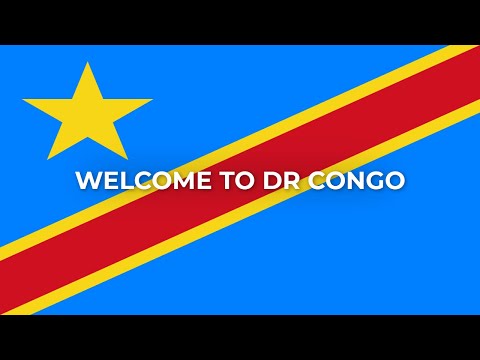
The Democratic Republic of Congo (DR Congo) is a vast and vibrant country with a rich tapestry of cultures, landscapes, and history. It’s a land marked by its expansive rainforests, including the world-famous Congo Basin, majestic rivers like the mighty Congo River, and an array of wildlife that makes it a haven for nature enthusiasts and adventurers alike. For those looking to explore this vast nation, a well-crafted video guide can be an invaluable tool in planning and enhancing your journey. Here’s your ultimate guide to creating and utilizing video resources to uncover the beauty and diversity of DR Congo.
#### **1. Understanding DR Congo Through Videos**
Videos are powerful mediums for storytelling and can provide insights that are often not possible through other forms of media. For travelers, video guides dedicated to DR Congo can offer comprehensive overviews of what to expect in terms of climate, cultural etiquette, safety precautions, and must-see destinations.
**Key Elements of a DR Congo Video Guide:**
– **Introduction to Culture**: Videos that feature local languages (French being widely spoken), traditional music, dance, and customs.
– **Wildlife Spotlights**: The country is renowned for its incredible biodiversity. Look for videos showcasing gorilla trekking experiences in Virunga National Park or elephant sightings in Garamba National Park.
– **City Tours**: Kinshasa, the capital, is bustling with energy. A video tour can help you navigate its lively streets filled with markets, restaurants, and historical sites.
– **Travel Tips & Safety**: Given DR Congo’s complex social-political environment, video guides often include essential travel tips about health precautions (like vaccinations), visa requirements, local laws, and safety advice.
#### **2. Where to Find Quality Video Guides**
– **YouTube**: This platform has numerous travel vloggers who have ventured into DR Congo. Channels like ‘Drew Binsky’ or ‘Fearless & Far’ might have detailed episodes exploring different parts.
– **Travel Agencies & Tour Operators**: Many companies specializing in African travels offer video itineraries or virtual tours on their websites which can be particularly insightful.
– **Documentaries**: Platforms like Netflix or National Geographic occasionally feature documentaries on Central Africa which include sections on DR Congo’s natural reserves or specific cultural aspects.
#### **3. Benefits of Using Video Guides**
– **Pre-Trip Planning**: They help you visually understand where you’re going and what you might want to do.
– *Enhanced Cultural Appreciation*: By watching real interactions within local communities or wildlife documentaries before visiting; travelers can gain deeper respect and understanding for their destinations.
– *Safety Preparation*: Given the variable stability regions within DR Congo, updated video content can advise on current regions safe for travel.
#### **4. Creating Your Own Video Guide**
For those who frequent travel blogs or vlogs, creating your own video guide post-trip can be enriching not only for personal memory keeping but also useful for others researching their journey:
**Tips for Creating Engaging Content**:
– Focus on telling a story about your experience – what stood out? What did you learn?
– Include practical advice based on your personal encounters – accommodation reviews, transport tips etc.
– Be mindful of background music – using local tunes can enhance the authenticity but ensure you have rights to use it.
### Conclusion
The Democratic Republic of Congo remains one of the less traversed countries in Africa but holds untold treasures waiting to be explored responsibly and profoundly. Whether consuming them before your trip or creating them after; using videos as guides offers an immersive way to connect with this profound destination ahead of actual travel – setting the stage for an unforgettable adventure into one of Africa’s most mesmerizing landscapes.
With careful preparation assisted by thorough visual aids like videos; any traveler’s experience in DR Congo might not just be safe but truly transformative—unlocking new perspectives on natural beauty conservation efforts along with deep cultural appreciation.
